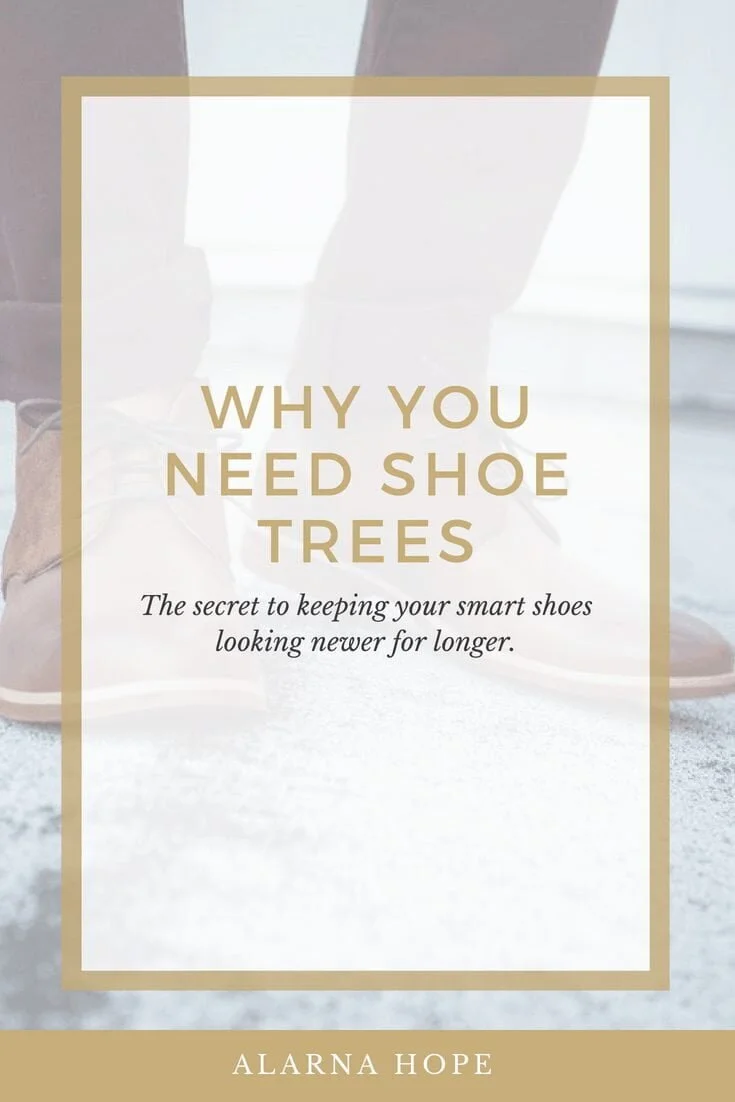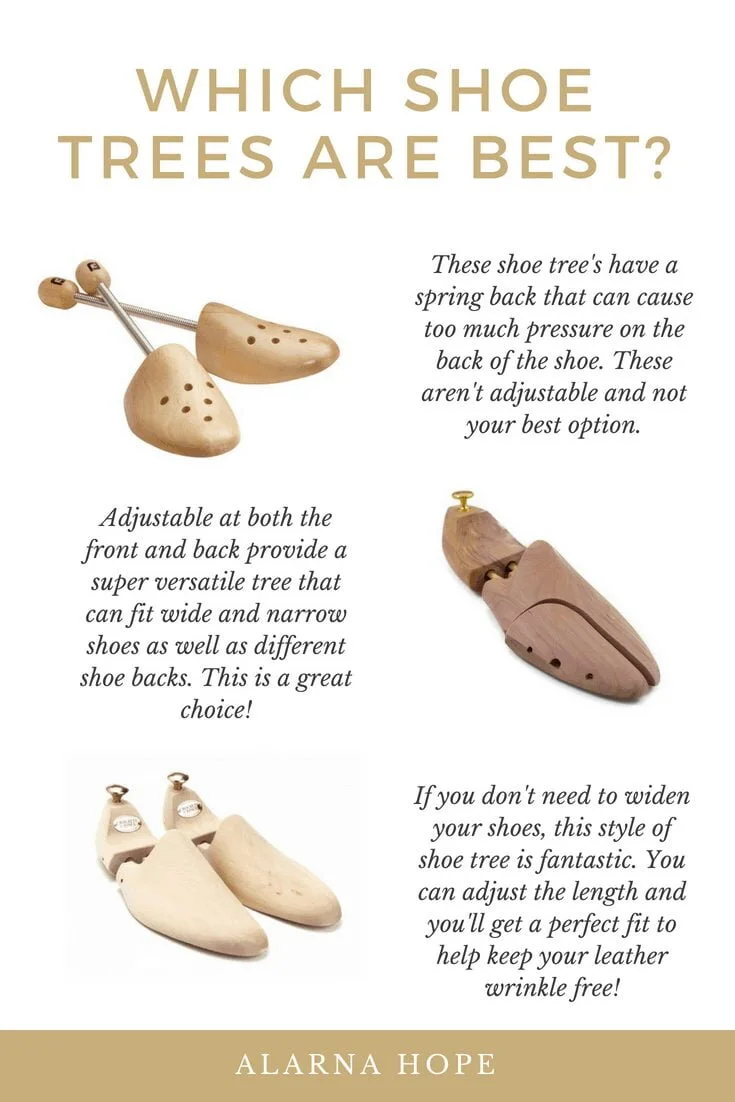Why Do You Need A Shoe Tree For Your Shoes?
There’s a lovely cobbler in the Strand Arcade who is constantly looking at my new clients’ old shoes like he’s found a stray puppy. Paul from Coombs knows shoe care like no one else I know and he knows when someone isn’t looking after their shoes.
You might have heard a shop assistant tell you to buy waterproofing spray or polish – but have they recommended shoe trees? Probably not. They’re not commonly spoken about these days but when I discover a client with them, I see a person who knows footwear, maintains quality and is getting their money’s worth from their shoes.
WHAT DO SHOE TREES DO?
A shoe tree, as huge and bulky as they sound, is a set of moulded blocks that slip inside your shoe and help your shoe shape back to its original form after you’ve been wearing it all day. They’re life extenders because they minimise wear marks across the front of shoes, keep your leather shoes in newer looking form and if you purchase the ones made from cedar, they keep critters and sweat from breaking down your shoes as fast. As an added bonus, the cedar ones keep your shoes smelling a little better.
WHAT TYPES OF SHOE TREE’S DO I NEED?
That depends on what you want them for, because you can buy shoe tree’s designed for particular types of footwear like chelsea boot trees or shoe trees for sneakers, or you can buy shoe tree’s for wider feet and bunions.
SIZED SHOE TREES
When buying shoe trees, it’s hard to go wrong. Following the wisdom of Paul, I have to agree that the shoe trees you buy in sizes are better than the one-size-fits-all variety. The one-size-fits-all version can put a bit too much pressure on the back of your shoe and actually make them less comfortable. Whereas a shoe tree that is your shoe size will fit your shoes perfectly and help to maintain their shape.
The sized shoe trees you buy should definitely be adjustable at the back to cater to different shoes and foot types. As an extra option, you can by some that adjust both in length and in the front width, if you’ve got a slightly wider foot. For example, if you’re constantly looking for shoe stretchers for bunions, a shoe tree that is your shoe size and adjustable in width or has pressure point adjusters will be a god send.
DO YOU NEED A SHOE TREE FOR DIFFERENT TYPES OF SHOES?
Not every shoe is the same, they don’t all fit the same way and some are harder or softer than others so it makes sense that for some shoes we might need a different shoe tree option. Here’s some you should consider:
SHOE TREE FOR SNEAKERS
It’s not always necessary to have a shoe tree for your sneakers unless you’ve purchased leather sneakers with a thin lining or a leather lining. If you have soft leather sneakers, then I advise you to get some so hard creases don’t form around the widest part of your foot and to make it easier to maintain their shape while cleaning.
CHELSEA BOOT TRESS & SHOE TREES FOR ANKLE BOOTS
Chelsea boot trees are designed to maintain the shape of the shoe, not just in the front but in the upper ankle area. If you have ankle boots or chelsea boots, using a pair of shoe tree’s that are cut higher will prevent the ankle of your boot from creasing.
What type of shoe trees are better?
Here’s a helpful guide:
Have I convinced you yet? I hope I have, but if not, keep reading.
Some people who have shoe tree’s don’t realise they can buy pressure point shoe tree’s that will stretch the shoe to provide relief from bunions, blisters and corns. The shoe tree, when used alongside a great leather conditioner and shoe polish can make your shoes last up to three times longer than they would without it. The average price for a quality cedar shoe tree set is $50 and can be purchased from cobblers like Coombs who will fit them for you and show you how to use them, or you can jump online to Amazon and pick up a pair for a similar price.
How’s your shoe collection looking? Here’s some further reading you’ll enjoy all about shoes!


